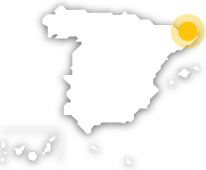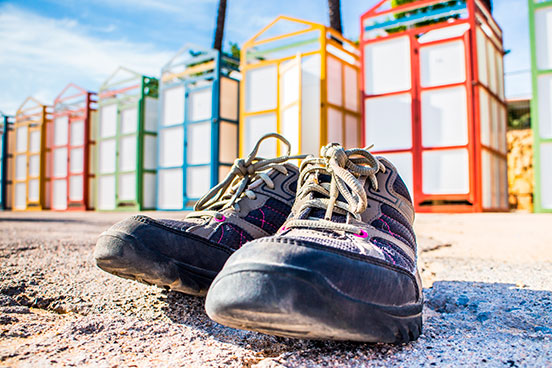A little history
Once upon a time, the Carabineros, Spain’s former frontier guards, patrolled the coast along this trail in search of smugglers. A patrol in Spanish is “ronda”, hence the name of the hiking trail. Although there are completely flat stretches, most of the trail is made up of narrow paths, suitable only for walking, with continuous climbs up and down, and can sometimes be a challenge.

Linear Trail
The linear trail runs along the shore for 43 kilometres, from Sant Feliu de Guíxols to Begur. It is intended to be walked over two days. On the first day you will pass through coves like Molí and Maset, beaches like Sant Pol and Sa Conca, and towns like Platja d’Aro. From Sant Antoni de Calonge the Camí de Ronda becomes a spectacular narrow path which snakes between the cliffs to Palamós.During the second day you’ll climb to the top of Cap Gros, with excellent views. After that you come to Fosca beach, with the ruins of Sant Esteve Castle. The wildest part of the trail starts here.You’ll see traditional architecture in the fishermen’s quarter of s’Alguer, Castell beach –one of the last unspoilt beaches on the Costa Brava– and a plethora of charming coves. Next, we recommend stopping to see the Cap Roig Botanical Gardens (with over 1000 plant species from all over the world) and then continuing on to Llanfranc and Tamariu. After that, you can go through the woods to Aiguablava beach and Fornells. A steep climb takes you to the end of the path, Begur.

Looped Trail
The looped trail is much longer (140 kilometres), as it begins and ends inland, in the city of Girona. It is intended to be walked over eight days, and although suitable for all, ideally it is for people used to longer walks.It crosses the mountainous massif of Les Gavarres, follows the shore of the Costa Brava, and returns to Girona via the plain of l’Empordanet and the peak of Santuari dels Àngels. The chapel here is where the Surrealist painter Salvador Dalí married Gala.As well as paradise beaches, this trail takes in mountain scenery, forests, and former railway lines converted to hiking trails or Greenways. There are different points of interest you will love, such as Ermita de Sant Elm: a chapel with impressive views over the Costa Brava. Pals and Peratallada are medieval villages carved into the rock. With its narrow streets, it’s a pleasure to stroll around. And the mountain of Sant Miquel, with breathtaking views, a medieval castle, and a 19th-century optical telegraph tower.

It’s not all about walking
Especially in summer, take the opportunity for a dip on any of the splendid beaches and coves along the way. And when you stop, don’t miss the local cuisine and terrific wines. Try seaside cooking made with locally fished seafood at restaurants on the shore. You can also taste wines from the Empordà Designation of Origin, or treat yourself to one of the Michelin-starred restaurants in the area.








